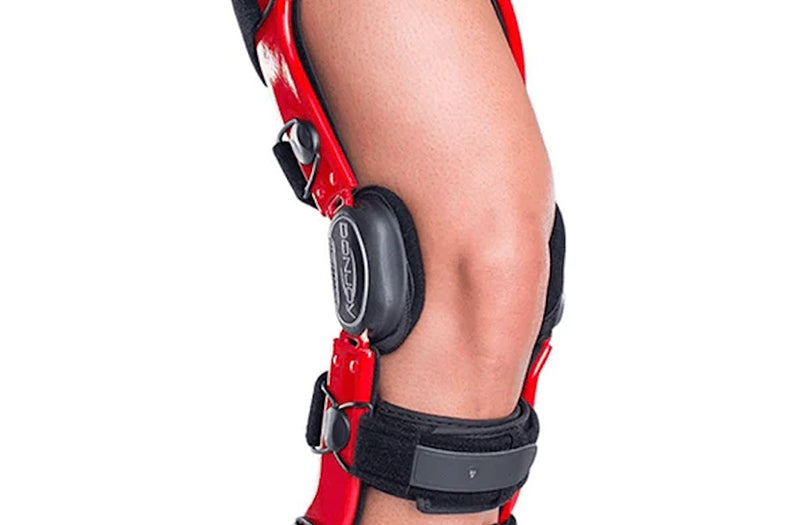Osteoarthritis (OA) is an extremely common condition affecting Canadians; a
new diagnosis of OA occurs every 60 seconds! [1] Because OA is so common,
it is a major barrier for people to enjoy a healthy lifestyle. Furthermore, with
over 30% of the workplace affected by OA during the job it is not surprising
to find that ‘conditions of sedentary behavior’ such as diabetes and heart
disease are ever-increasing concerns. And we can’t rely on surgeons to make
everything better with a ‘new knee’. Notwithstanding that a knee replacement is a major surgery that carries the usual risks of undergoing general anesthesia, recent waitlist data shows that less than 50% of cases even get a consult with a surgeon in 6-months, let alone access to an operating room.
A Positive Outlook is Key
Conservative management is an essential component to the successful
treatment of OA. Successful in this sense simply means enjoying a high
quality of life with a minimum of pain. A recent report published in the
British Journal of Sports Medicine from Dr JP Caneiro from Curtin University is
clear that we need to start changing the treatment focus for OA [2]. A good
place to start is to avoid falling into the trap that OA is a structural problem
that needs to be fixed. There is ample evidence on the striking disconnect
between apparent structural degeneration (seen through imaging) and how
much pain someone is in, or how functional their body is [3,4]. Caneiro
further states how important it is to put the patient in charge of their
treatment, to build confidence in their movements, and to set realistic and
progressive movement goals. Make no mistake, increasing pain-free
movement is one of the best treatments for OA [5,6].
Increase the Confidence to Move By Reducing Joint Stress
It takes a team to get you on your movement journey and Kintec’s certified
pedorthists, specializing in footwear, orthotics and bracing, can be a valuable
member of that team. People with knee OA tend to stress certain parts of
their knee more than others, and this stress can cause irritation,
inflammation and pain. Furthermore, studies show that increased joint
stress is associated with a worsening over time of osteoarthritis [7].
Reducing joint stress makes a lot of sense in managing OA. At Kintec we can
help you make footwear selections, choose bracing options and assess you
for custom or over the counter insoles that may help lower joint loads and
reduce pain. Let’s discuss each of these factors in more detail.
Footwear
Footwear has a large impact on the biomechanics of your joints so choosing
the best shoes for you is an important part of your treatment plan. Footwear
is designed with a variety of features that are not obvious, but that have
implications for your comfort and the forces your joints endure. Shoes that
are more stable reduce stress to the knees and features such as the way the
shoe outsole is flared or the density of the midsole affect that stability. We
all know that high heels are not great for our feet and joints but did you
know that research shows even small differences in height between the heel
and forefoot of shoes or the thickness of the sole can also affect your knees
[8]? Footwear with decoupled midsole components (soles that are not one
solid piece of material) can reduce knee loads by guiding the foot from heel
strike to full contact more naturally may also reduce knee forces. There are
many functional elements of footwear that need to be considered when
making choices for your feet and knees. Just as important is to retire old
shoes that are worn down at the outside edges of the heels. Worn out shoes,
especially at the heel can exaggerate stress on the affected part of the knee.
Our clinicians are footwear experts so come in to see one of our clinicians to
learn how their knowledge can help you.
Foot orthotics/insoles
More than 25% of people with knee OA also have foot pain which
complicates selecting insoles advertised to reduce OA symptoms. Often
lateral wedge insoles (that tip the foot toward the arch side) are
recommended because they are known to unload the medial compartment of
the knee. However, this lateral wedging can create instability at the foot and
ankle that may lead to pain in some foot types. In a recent collaboration
between Kintec and researchers at UBC’s Department of
Rehabilitation Sciences found that the addition of custom arch
support to a lateral wedge improved comfort and knee symptoms in
people with knee OA [9]. Orthotics and insoles are a cost effective, easily
tolerated form of treatment that is inobtrusive and functional. Being
assessed for foot type, ranges of motion and foot and leg function will
provide the information needed to appropriately recommend what type of
over the counter insole or custom orthotic may function best for you.
Knee braces
Many patients with knee OA can benefit from the right type of brace for their
specific needs. A number of studies showed improved stability and reduced
risk of falling using knee braces as well as a reduction in pain [10,11]. The
type of brace recommended for you depends on the location of disease in
the knee, your anatomy, pain levels and other factors. For example, unloader
braces for medial (innermost side of the knee joint) knee OA have been
shown to improve pain levels but must be specifically fitted, or in some cases
custom made, to best function for you.

Let’s work together to keep you active
Staying active is a really important part of OA treatment. It’s been shown
that moderate aerobic and muscle-strengthening activity can decrease knee
pain, maintain joint range of motion and decrease the number of analgesics
used for OA pain. Being active also helps maintain a healthy weight or help
reduce weight if necessary. While there is no cure for OA there are many
ways to mitigate symptoms and maintain or improve function. Education is
an important first step in actively taking part in your OA management.
References
[1] E.M. Badley, J.M. Wilfong, D. Millstone, A. V Perruccio, National Report
on the Status of Arthritis in Canada, 2018.
[2] J. Caneiro, P.B. O’Sullivan, E.M. Roos, A.J. Smith, P. Choong, M. Dowsey,
D.J. Hunter, J. Kemp, J. Rodriguez, S. Lohmander, S. Bunzli, C.J. Barton,
Three steps to changing the narrative about knee osteoarthritis care: a
call to action, 2019.
[3] T.W. O’Neill, D.T. Felson, Mechanisms of Osteoarthritis (OA) Pain, Curr.
Osteoporos. Rep. 16 (2018) 611–616.
[4] P.A. Dieppe, Relationship between symptoms and structural change in
osteoarthritis: what are the important targets for therapy?, J.
Rheumatol. 32 (2005) 1147–1149.
[5] M. Fransen, S. McConnell, A.R. Harmer, M. Van Der Esch, M. Simic, K.L.
Bennell, Exercise for osteoarthritis of the knee: A Cochrane systematic
review, Br. J. Sports Med. 49 (2015) 1554–1557.
[6] S. Farrokhi, C.A. Voycheck, S. Tashman, G.K. Fitzgerald, A
biomechanical perspective on physical therapy management of knee
osteoarthritis, J. Orthop. Sports Phys. Ther. 43 (2013) 600–619.
[7] N.E. Lane, K. Brandt, G. Hawker, E. Peeva, E. Schreyer, W. Tsuji, M.C.
Hochberg, OARSI-FDA initiative: Defining the disease state of
osteoarthritis, Osteoarthr. Cartil. 19 (2011) 478–482.
[8] D.C. Kerrigan, J.R. Franz, G.S. Keenan, J. Dicharry, U. Della Croce, R.P.
Wilder, The Effect of Running Shoes on Lower Extremity Joint Torques,
Phys. Med. Rehabil. 1 (2009) 1058–1063.
[9] M.A. Hunt, J. Takacs, N.M. Krowchuk, G.L. Hatfield, R.S. Hinman, R.
Chang, Lateral wedges with and without custom arch support for people
with medial knee osteoarthritis and pronated feet: An exploratory
randomized crossover study, J. Foot Ankle Res. 10 (2017) 1–10.
[10] T.B. Birmingham, J.F. Kramer, A. Kirkley, J.T. Inglis, S.J. Spaulding, A.A.
Vandervoort, Knee bracing for medial compartment osteoarthritis:
Effects on proprioception and postural control, Rheumatology. 40
(2001) 285–289.
[11] A. Kirkley, S. Webster-Bogaert, R. Litchfield, A. Amendola, S.
MacDonald, R. McCalden, P. Fowler, The effect of bracing on varus
gonoarthritis, J. Bone Jt. Surg. 81 (1999) 539–548.




